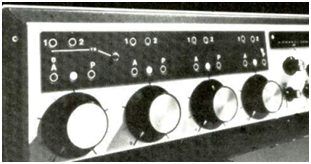Tech Tip: A Shocking Reminder

[March 2022] Sometimes it is the little things that we forget to notice and handle, almost until it is too late. How do you handle this one?
In later Winter, as the snow goes away, a lot of places are dealing with very dry air.
Yes, we also could focus on the dry parts of the Fall, along with lightning issues from the storms. But in some places it turns out electostatic discharge (ESD) can become was an issue nearly year round.
Indoors, air conditioning can cause humidity to drop even further, as it tends to pull moisture from the air. Poorly designed systems can be even dryer. All-together, in addition to nose bleeds, this situation generally means static electricity builds up on our bodies as we move around.
And ESD – which has high Voltage with short, low Amperage – can create a real potential for problems if we do not have a plan.
ZAP!
The first indication there is an issue occurs when you touch a door or light switch and hear and see a little spark as the static electricity on you and your clothing jumps to ground.
It actually takes very little effort to generate a Voltage differential. Even blowing out a keyboard or wiping dust away can build enough static to cause an issue. The biggest danger then, of course, is touching something where you might damage an IC chip or three. In many cases it only takes 25 Volts to damage an IC. On the other hand, typical levels of charge that might “normally” build up on someone can be measured between 250 to 2500 Volts. Then there is lightning, with a lot more static to give!
While some modern ICs are a bit more static resistant that they were a couple of decades ago, a strong buildup of static can still a lot of damage things – or cause a computer to “lock up,” reboot, or simply lose its mind. Similarly, a lightning strike is that not shunted to ground can cause all sorts of bad things.
Want to show your staff what ESD looks like? Try this video.
NOTHING NEW
The effects of ESD are not new – they have been observed for centuries.
When gunpower made it from China to Europe in the 13th century it soon became clear that static control was needed to prevent accidental ESD ignition in gunpower stores.
Today we still hear from time to time about fires, even explosions caused by ESD.
STUFF HAPPENS
Out here on the desert, we do often see days when the air humidity is well below 10% – many times as low as 3%
One radio station out here had acquired a Ramko DC-8M, an eight-pot console without key switches. It used capacitive touch pads.

None of these buttons move – they are capacitive touchpads
Do we need to tell you what happened with this console? More than that. Sometimes just bringing your hand near the console trigged on or off actions. What can you do?
Another station failed to truly ground their gear. So when someone would sit down and touch anything, turntables and cart machines were often trigged en masse. What could be done?
Still other stations report that DJs would “take out” CD players or even automation and/or laptop computers. How can you prevent the ensuing dead air – or worse?
Slightly humorous, perhaps is the case where talent gets real close to a microphone and … yes, this has happened … generate a zap from the microphone to their nose!
One more item: Some years ago, when we all had video cassette recorders, a local storm left our family with a unit that no longer turned on. And this was with a consumer grade line filter.
SO, WHAT IS THE SOLUTION?
The simplest and quickest solution often seems to be mixing fabric softener and water and spraying the area, especially the carpets.
That does seem quick and simple. At least it does until staff starts slipping on the damp surfaces. Commercial Anti-Static Spray? A bit better, although fairly expensive, but most people do not seem to like the odor of the products. Some stations install a humidifier – some for less than $50 – and endeavor to keep the unit full of clean (mostly mineral-free) water.
Tip: Get a quiet unit, and it will not only reduce ESD, but improve staff health. In cold climates, a heated humidifier might serve a dual purpose.
SOME HARDWARE SOLUTIONS
Clearly, as hinted at above, a solid ground that will take ESD, whether manmade or from lightning away from sensitive gear is probably the first line of defense.
If you are at a workbench, a conveniently located wrist grounding strap might be the easiest solution, but that does not help most staff that is moving around during their shift.
Do check to see that the chassis of every piece of equipment is at common ground potential. This will eliminate a lot of casual touching ESD. A similar approach might be to use a high value resistor between the gear and ground (or some “touch pad”) to dissipate the charge with less shocking effect to the staff member. But, what about the “start” and “stop” buttons? This could allow an ESD to bypass the chassis ground.
Although designed for workstations, ion generators might also provide some positive effect.
SOMETHING TO STAND ON
Some place install anti-static mats in each studio – and the hallway – so individuals automatically get discharged as they enter, and stay on a constant “drain.”
There are two sorts of mats, with softer ones better for standup studios, and the harder ones for use where you have chairs that roll around. Yes, they need to be connected to the station ground.
Bonus one: they do not get dirty, so any carpets will stay cleaner.
By the way, there are other optional floor coverings that do resist ESD build up such as an epoxy finish that some transmitter site operations have used to good effect.
Yes, there also are some anti-static and ESD carpets, too. A quick search brings up a carton of 12 tiles for $211, as well as a warning that anti-static carpets do not have a long
MAKING THE RIGHT DECISION
While none of these solutions are cheap – they do work.
And, over time even a pricey anti-static installation may well prove to be a good value for a station. In each case, you will need to balance cost vs time vs length of protection.
We hope you will find the best anti-ESD solution for your station(s) and restore calmness for all.
Return to The BDR Menu
